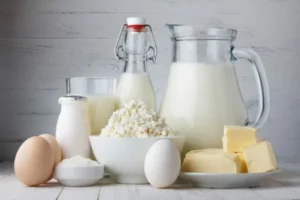
With farm Acts out of the picture, the government may look at reforming the input side of the agriculture sector — regulations and rules that govern seeds, fertilisers and plant chemicals.
Sources said such a blueprint, which is aimed at making the life of farmers easier, with quicker approvals but not compromising on quality, is in the works as part of the 100-day agenda of Modi 3.0. Also, ways to administer fertiliser subsidy more effectively and cutting down on leakages and diversions to build on the success of neem-coated urea are being thought of.
Â
Few years back, a proposal was mooted in some quarters to conduct a pilot in a few districts of the country on a modified version of the direct benefit transfer (DBT) that would establish some sort of linkage between land holding and the nutrient’s consumption.
Â
Currently, the version of DBT in place involves farmers purchasing their fertilisers through point of sale (POS) devices after undergoing Aadhaar authentication. This ensures that the identity of the person, who purchases fertiliser bags, is well established.
Â
However, there is no restriction on the number of bags that each farmer can purchase. This sometimes leads to excess usage and chances of misuse.
Â
In case of seeds and plant chemicals, sources said lots of reforms are urgently needed as the regulatory and appÂroval process in India takes a long time. This is because it involves multiple layers.
Â
They said the government could look at creating a favourable policy environment for the agrochemicals sector. This would facilitate an increase in agrochemical exports and position India as an attractive destination for foreign investments. It would also safeguard the interests of small and regional players operating in the industry.
Â
The current process for registration of a new agrochemical molecule in India is often perceived as time-consuming, costly, and a complex procedure by the industry. Only a few large multinational companies and leading domestic players can afford to invest in research and development (R&D) to develop new molecules and get them registered for manufacture and sale.
As a result, only around 280 molecules and 800 formulations (including combinations) are registered in India. Compared to India, this number is double in the European Union (EU) and triple in Japan.
Â
The industry wants reforms in the Central Insecticides Laboratory (CIL) as well to cut down on pending lists and time taken for clearance of new applications.
Â
One of the major challenges faced by Indian agricultural exporters is the stringent rules related to pesticide residues in regions like the EU.
Â
“Registering molecules deemed safe by major importers to abide by maximum residue limit (MRL) norms is a policy change that may boost agricultural exports in the longer term. MRL testing infrastructure may also be improved to provide increased access to testing at lower costs,” a senior industry player said.
Â
Also, the problem of spurious seeds and the need for proper regulations to check their proliferation could form part of the possible reforms.
Â
Agrochemical INC snapshot
> The Indian agrochemicals industry has a production capacity of 0.32 million tonnes
> In terms of trade, India is a major exporter and importer of agrochemicals
> India was the 4th largest exporter of agrochemicals in 2020
> In 2020, it exported pesticides worth $3.4 billion (9.4 per cent of global exports)
> In FY20, China alone contributed to around 49 per cent of India’s total pesticide imports (valued at Rs 9,096 crore)
> Agrochemical industry is expected to grow at a compound annual growth rate of 8–10 per cent until 2025
Source: Trade and industry bodies
First Published: Apr 17 2024 | 11:14 PM IST





